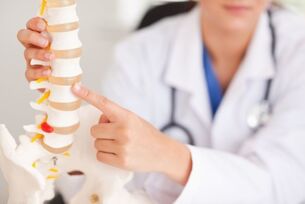
At least once in every person’s life he has a problem with a back injury. This symptom often occurs after sitting in an uncomfortable position for a long time. Pain is safe for health and will disappear after a good rest.
A prescription can only be prescribed after a complete diagnosis and determination of the cause and nature of the disease. Without a doctor's examination, you cannot take any action alone.
Various reasons
The most common causes of pain are: osteochondrosis, scoliosis, and herniated disc. Tumors and tissue infections are rare.
Pain manifests in different ways depending on the disease. If the cause of the pain is renal colic or gastric ulcer, the sensation is constant regardless of the nature of the activity (the person is lying down or doing vigorous exercise).
If there is rickets in the chest, the pain will radiate to the heart, and then the patient will mistakenly believe that they have angina.
If you hurt your waist while lying down
When pain occurs and a person does not know what to do, he would rather lie down, hoping that the discomfort will disappear. However, if the pain worsens when lying down, it is likely to be a musculoskeletal disease called ankylosing spondylitis.
The disease affects young people, the vertebrae change, they grow together, and the flexibility of the spine decreases.
Since the spine cannot occupy its natural position, people will feel pain when lying down.
Ankylosing spondylitis is hereditary; chronic infectious diseases provide the impetus for its development. If you sit still for a long time, your lifestyle will be more painful.
The first symptom is stiffness in the spine. If you lie down, your back pain will get worse. Early diagnosis can completely cure the disease.
Primary pain syndrome
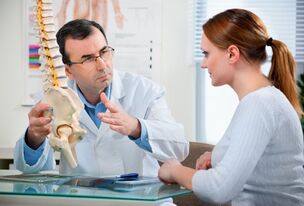
Doctors distinguish between primary and secondary pain syndromes when distinguishing back pain from lower back pain.
Primary low back pain syndrome involves musculoskeletal changes that are essentially morphological and functional.
These are the most common causes of pain:
- Osteochondrosis (damage to bone and cartilage tissue, intervertebral disc);
- Spinal atrophy (damages the intervertebral joints and affects the mobility of the spine).
Secondary pain syndrome
Secondary syndromes include a variety of diseases that cause back pain in the lumbar region:
- Scoliosis (curved spine);
- reflects pain;
- Osteoporosis and osteomalacia (bone tissue damage);
- Ankylosing spondylitis (non-infectious inflammation);
- Rheumatoid Arthritis;
- Isolated tumor or formed metastasis;
- The state of stroke, resulting in damage to the cerebral spinal cord circulation;
- Gastrointestinal diseases (especially appendicitis or bowel disease); Diseases in the pelvic area (renal colic, venereal disease);
- Spinal fractures (the most dangerous and serious cause).
Acute pain
Low back pain is also divided into acute and chronic. Each of them pointed out different reasons.
A harmless but painful manifestation of an acute sprain is a muscle sprain. It occurs due to the formation of long muscle spasms.
Athletes and those engaged in professional work are most vulnerable. The pain is located in the lower back, but it is obviously felt in other parts of the body, and the person's movement is limited, the pain of lying down disappears.
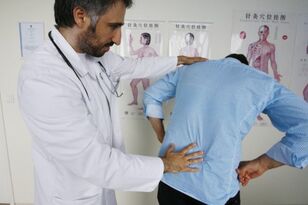
Spinal injuries can also cause acute pain. The most dangerous injury is a spinal fracture.
The fracture may be caused by a fall, or it may be completely unnoticed, for example, if the patient has Paget’s disease, osteoporosis, hyperparathyroidism or has a tumor.
Disc displacement in the lumbar area can also cause pain. In this case, human mobility will be severely restricted.
Pain itself is caused by nerve root compression. Additional symptoms:
- Violation of sensitivity;
- Reduced or no Achilles tendon and knee reflexes;
- Radial pain.
The displacement of the vertebrae can cause nearby pathology until the last person is healthy. Diseases of the lower vertebrae cause bladder and bowel disease.
Another cause of acute pain is multi-faceted syndrome. In this case, the intervertebral disc is not affected, only the root compression from the spinal canal occurs. Due to the narrowing of the intervertebral foramen, the foramen narrows.
Serious diseases such as epidural abscesses can also cause pain. What to do in this situation?
The disease should not be delayed because it can lead to tragic consequences. All measures must be taken immediately to eliminate compression of the spinal cord, and sometimes surgical intervention is required.
The area from the lower back to the knees may cause pain due to hip joint disease.
Chronic pain
If there is discomfort in the waist, and the pain persists, natural pain or pulling, it indicates that there are other diseases besides acute pain.
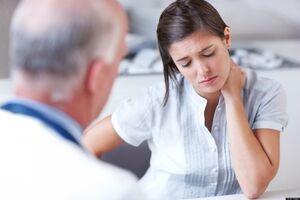
The first cause is deformed spondylosis. The vertebral dystrophy of the lumbar spine makes ligaments weaken and bones start to grow.
As a result, the growth of bones began to put pressure on the nerve roots, and pain occurred. Numbness and weakness in the legs may worsen the symptoms.
Chronic low back pain may be caused by cancer or metabolic disorders.
In this case, you need to undergo anti-cancer treatment, change the daily treatment plan and diet to eliminate the root cause, all other methods will be ineffective.
Another cause is osteomyelitis, when the infection enters the bones and causes inflammation.
Diseases that cause lower back pain
Other conditions that cause back pain
- Facet joint disease;
- Spinal stenosis;
- Intervertebral disc herniation;
- Myogenic pain;
- The annulus fibrosis is broken.
In women, pelvic diseases (such as endometriosis, uterine and ovarian cancer) may cause pain. In men-prostatitis or prostate cancer.
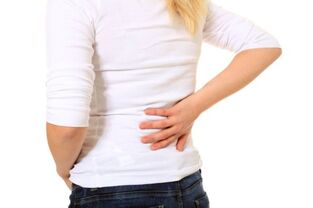
Kidney disease, stomach tumor, duodenum can also enter the lumbar region. Ulcerative colitis, colon tumors, and diverticulitis can cause pain.
If the pain extends not only to the waist but also to the chest cavity, it is important to rule out the possibility of aortic dissection.
The cause of harmlessness can be physiological changes, such as postpartum or sudden weight gain, the effect of epidural anesthesia.The treatment of this type of pain is not carried out, and the patient is powerless, and the pain will disappear by itself after a certain period of time.
Lumbar spine treatment
Before starting treatment, you need to make a correct diagnosis. First, doctors conduct clinical examinations on patients, and then rely on the results of ultrasound and MRI examinations.
Based on the diagnosis, a treatment plan that combines multiple methods has been selected.
First of all, treatment is aimed at eliminating pain and restoring patients to a comfortable life. After all, a complete cure for the disease (if possible) can last for several years.
If the bruise is the cause of the disease, the surgeon will treat it. According to the cause of pain that the therapist/family doctor should determine, orthopedic doctors, nephrologists, urologists, proctologists, gynecologists, cardiologists, gastroenterologists, pulmonologists, infectious disease specialists can maintain a further medical history.
Previously, only antibiotics were used to treat back pain. There are too many treatment methods, and only experienced doctors can help you choose the right method.
To alleviate the patient’s condition, it is recommended to replace the mattress with an orthopedic mattress. Anesthetic heating ointments and gels can relieve pain, and they also contain anti-inflammatory ingredients.
Non-steroidal anti-inflammatory drugs are also recommended. Muscle spasms will relieve muscle relaxation, and nerve root edema will eliminate diuretics and vascular drugs.
When the patient can return to normal life, physical therapy, massage and therapeutic exercise will continue.
Use the following non-drug methods for treatment:
- Vacuum therapy;
- Acupuncture;
- Laser therapy;
- Manual therapy;
- Dry traction;
- Drug puncture;
- Electrical stimulation;
- Magnetic puncture.
This treatment can quickly relieve pain and eliminate the cause itself, thus ensuring long-term results.




























